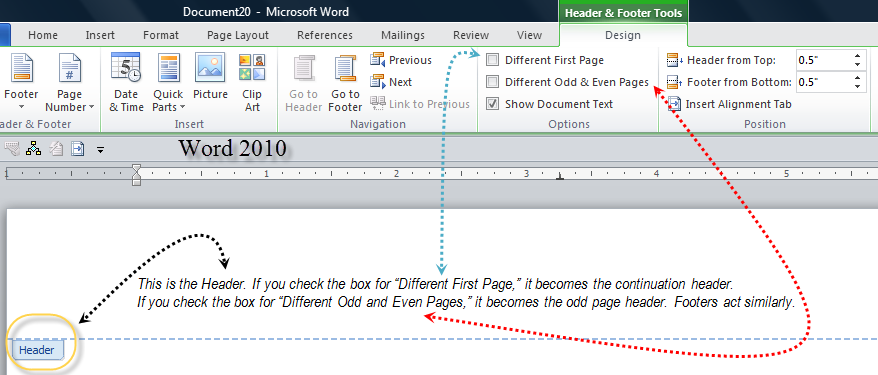How To Make Running Head On Word For Mac
Creative Suite applications are not supported on macOS 10.12 (Sierra) and therefore, many of the Creative Suite installers may not function normally on macOS 10.12. See the information below for available workarounds to install Creative Suite applications under macOS 10.12. Adobe air for mac sierra.
By Customize the document headers and footers in Word 2011 for Mac to show page numbers, dates, and logos for formal stationery. You can work with headers and footers in several of Word 2011’s views. The quick way to work with headers and footers is by way of the Header and Footer group on the Office 2011 Ribbon’s Document Elements tab.
Clicking either the Header or Footer button displays a gallery from which you can choose a style for your header or footer. The basic layout of three positions (left, center, and right) is the first style on the palette. Notice that some styles affect only odd-numbered or even-numbered pages. Some of the styles apply tables to the header or footer, so if you click into one of these styles, the Format Tables tab on the Ribbon will activate.
Where is the running head option in Word MAC I am using word for MAC I am constantly writing papers in my college courses and an required to have a running head. I cannot find the button or the drop menu item that puts that in my document.
When you choose a header or footer style, Word changes the interface so that you can type in your header or footer. You can display this view by choosing View→Header and Footer without having to choose a style from the Ribbon. To work with the interface, simply click into it and type.
The tutorials online show old versions of word, where the 'link to previous' button is being used. It looks like this question has been asked before in regards to word 2016, and I have 2017. I am trying to remove the words 'running head' from all pages except the title page, page 1. It demonstrates how to create a running header, a common requirement for research papers using the APA style, using Microsoft Word 2007. Originally created by Richard Baer (Camosun College) on.
Click the Page # button on the Ribbon to display the Page Numbers dialog, which you can use to choose alignment and formatting options for your page numbers. To exit Header and Footer view, choose a view from the views listed in the topmost group of the View menu, or double-click the document body. You can also click the small Close button below the Header or above the Footer area. You may want to format your Header or Footer to display Page # of #. To make this custom format starting without a Header or Footer style, do the following: • Choose View→Header and Footer from the menu bar. • Click within either the Header or Footer area.
Your cursor will be at the left. Press Tab once or twice to move to the center or right, if desired. • Type the word “Page,” followed by a space. Reinstall office 365 home. • Choose Insert→Field from the menu bar.
• Make sure that Categories is set to (All). Under Field names, choose Page and then click OK. • Add a space and then type of followed by another space. • Choose Insert→Field from the menu bar. Mp4 player for macbook.
Java for os x 2013-005 and mac os x v10.6 download google. • Under Field Names, choose NumPages and then click OK.
By Customize the document headers and footers in Word 2011 for Mac to show page numbers, dates, and logos for formal stationery. You can work with headers and footers in several of Word 2011’s views.
The quick way to work with headers and footers is by way of the Header and Footer group on the Office 2011 Ribbon’s Document Elements tab. Clicking either the Header or Footer button displays a gallery from which you can choose a style for your header or footer. The basic layout of three positions (left, center, and right) is the first style on the palette. Notice that some styles affect only odd-numbered or even-numbered pages.
Some of the styles apply tables to the header or footer, so if you click into one of these styles, the Format Tables tab on the Ribbon will activate. When you choose a header or footer style, Word changes the interface so that you can type in your header or footer. You can display this view by choosing View→Header and Footer without having to choose a style from the Ribbon. To work with the interface, simply click into it and type.
Click the Page # button on the Ribbon to display the Page Numbers dialog, which you can use to choose alignment and formatting options for your page numbers. To exit Header and Footer view, choose a view from the views listed in the topmost group of the View menu, or double-click the document body.
You can also click the small Close button below the Header or above the Footer area. You may want to format your Header or Footer to display Page # of #.

To make this custom format starting without a Header or Footer style, do the following: • Choose View→Header and Footer from the menu bar. • Click within either the Header or Footer area. Your cursor will be at the left. Press Tab once or twice to move to the center or right, if desired. • Type the word “Page,” followed by a space. • Choose Insert→Field from the menu bar.